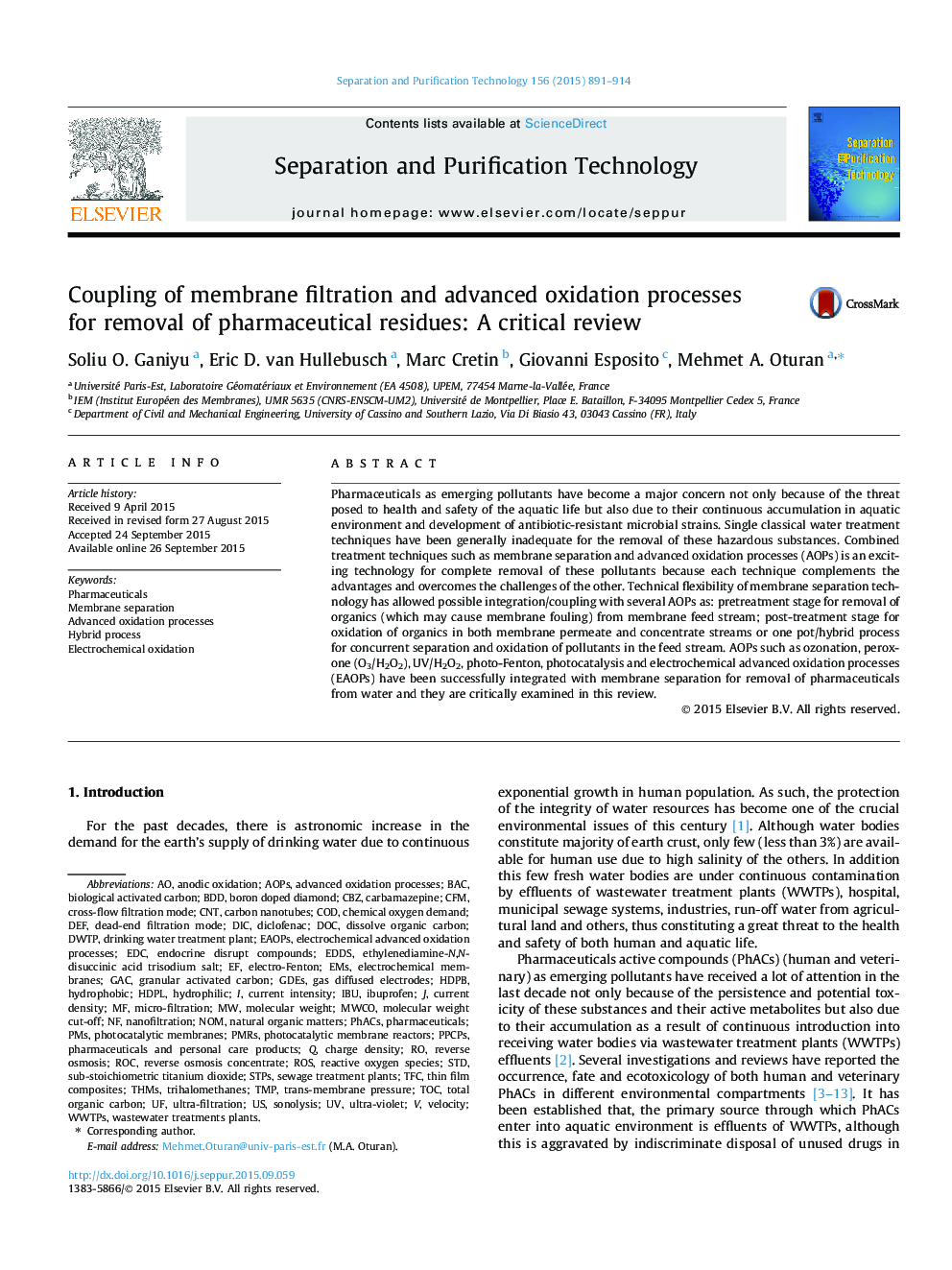| Article ID | Journal | Published Year | Pages | File Type |
|---|---|---|---|---|
| 640166 | Separation and Purification Technology | 2015 | 24 Pages |
•Wastewater treatment plants effluents constitute the major source of PhACs in aquatic environment.•Nano-filtration is an effective technique for PhACs removal from wastewater.•Coupling of AOPs with membrane filtration as pre/post-treatment or hybrid process.•Hybrid process is only possible with photocatalysis or EAOPs.•EAOPs–membrane filtration is an efficient hybrid wastewater treatment technique.
Pharmaceuticals as emerging pollutants have become a major concern not only because of the threat posed to health and safety of the aquatic life but also due to their continuous accumulation in aquatic environment and development of antibiotic-resistant microbial strains. Single classical water treatment techniques have been generally inadequate for the removal of these hazardous substances. Combined treatment techniques such as membrane separation and advanced oxidation processes (AOPs) is an exciting technology for complete removal of these pollutants because each technique complements the advantages and overcomes the challenges of the other. Technical flexibility of membrane separation technology has allowed possible integration/coupling with several AOPs as: pretreatment stage for removal of organics (which may cause membrane fouling) from membrane feed stream; post-treatment stage for oxidation of organics in both membrane permeate and concentrate streams or one pot/hybrid process for concurrent separation and oxidation of pollutants in the feed stream. AOPs such as ozonation, peroxone (O3/H2O2), UV/H2O2, photo-Fenton, photocatalysis and electrochemical advanced oxidation processes (EAOPs) have been successfully integrated with membrane separation for removal of pharmaceuticals from water and they are critically examined in this review.
